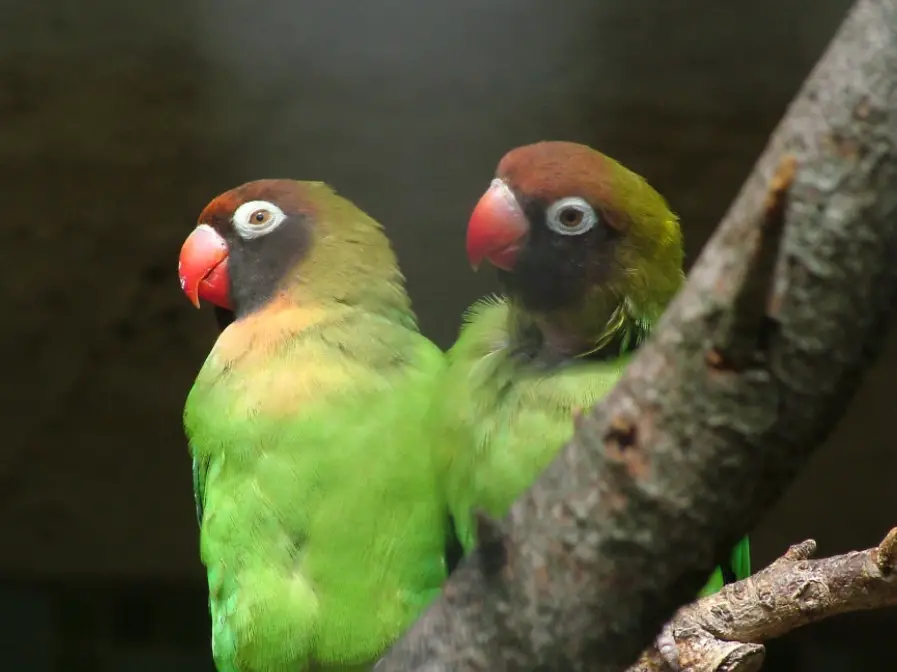
Sometimes treated as a subspecies of A. lilianae, from which separated by a 100-km block of unsuitable miombo (Brachystegia) woodland, and also on occasion lumped in single species with A. fischeri and A. personatus; perhaps best considered to form a species-group with all three. Monotypic.

Subspecies
Monotypic.
Distribution
SW Zambia, patchily from R Kafue S to R Zambezi. Unconfirmed reports from neighboring Namibia, Zimbabwe, and Botswana.

Habitat
Medium-altitude deciduous woodland, dominated by mopane (Colophospermum mopane) but only where adjacent to woodland dominated by Baikiaea plurijuga,
Black-cheeked Lovebirds using mopane in the dry season, and Baikiaea in the rains. Usually within a reasonable distance of reliable water source, at which Black-cheeked Lovebirds drink daily.

Movement
Subject to some local movements, possibly seasonal in nature, and said to be annual in the Senanga district of Zambia.
Diet and Foraging
Black-cheeked Lovebird Seeds of Amaranthus, Rottboellia exaltata, Rhus quartiniana, Albizia anthelmintica, Combretum massambicense, and Syzygium guineense, and grass seeds Hyparrhenia and Eragrostis; also young leaves of Pterocarpus antunesiana.
Sounds and Vocal Behavior
The commonest vocalization is a screechy “krreek” or a disyllabic “chi-reek!”. When perched, utters a wide variety of chirruping and screechy notes. Large flocks maintain continuous twittering.
No clear differences with A. fischeri, A.personatus, and A. lilianae.
Agapornis nigrigenis (black cheeked lovebirds)
SOURCE: Alejandro Mola García-Galán
Breeding
Nov–Dec in Zambia. Black-cheeked Lovebird Nest in large mopane trees. In captivity, a dome-shaped nest is built in cavities. In captivity: 3–8 eggs; incubation c. 24 days; nestling period c. 41 days.
Lovely video with Black-cheeked Lovebirds family in nest
SOURCE: Lazaros Zacharia
Conservation Status
VULNERABLE. CITES II. A BirdLife “restricted-range” species. Decline (or inability to recover) attributed informally to the replacement in the 1950s of sorghum and millet by maize (Black-cheeked Lovebirds used to be crop pests), although also to massive exploitation in the 1920s, with a report of 16,000 being captured in four weeks in 1929 for the cagebird market.
The current estimated total is around 10,000 in two subpopulations, 6200 in S and 3800 in N. Present in Kafue National Park.
Other lovebird types:




















